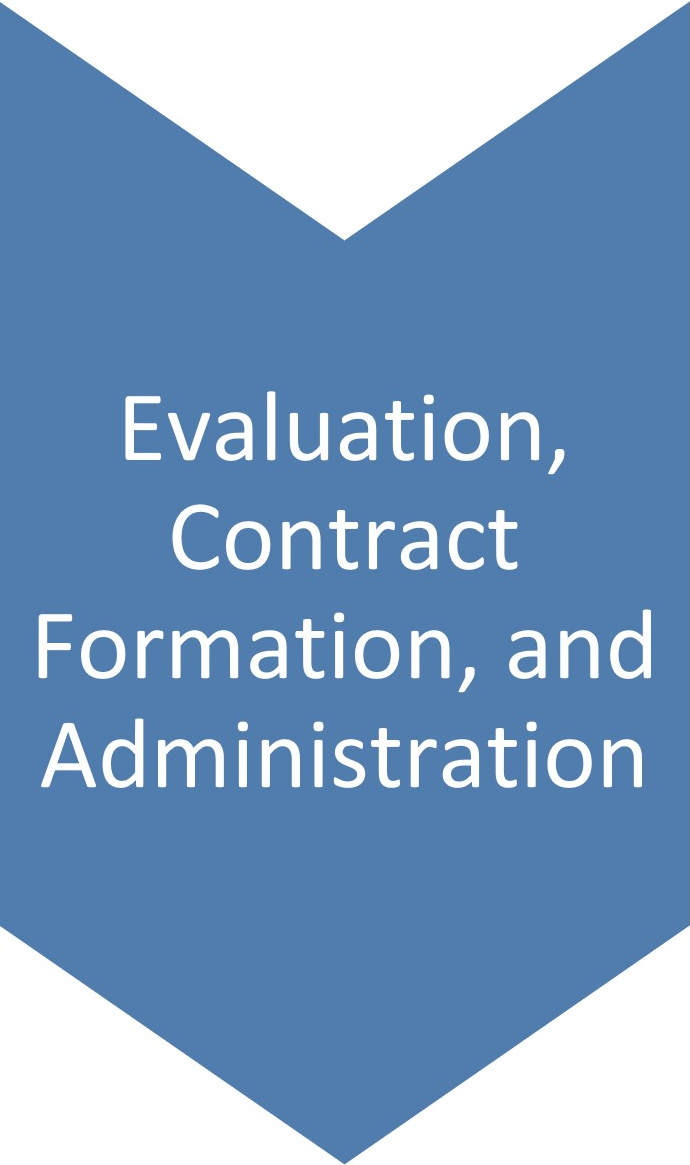Market Research
|
 |
Define the Need |
- EO 14008, Tackling the Climate Crisis at Home and Abroad
 , requires federal agencies to identify their top 5 most critical supplies and services at risk of disruption by acute or chronic long-term climate change. To begin the market research phase, you should review your agency’s Climate Change Risk Management Plan , requires federal agencies to identify their top 5 most critical supplies and services at risk of disruption by acute or chronic long-term climate change. To begin the market research phase, you should review your agency’s Climate Change Risk Management Plan to determine the criticality of the products or services being acquired. to determine the criticality of the products or services being acquired.
- Identify the key climate related risks and potential mitigation strategies. Some ways to do this include:
- Determine if climate related considerations were included in the previous contract;
- Check to see if climate related disruptions occurred under the last contact;
- Consider using GSA’s Market Research as a Service (MRAS) tool to strategically target GSA contract holders via RFI or Sources Sought to get industry input;
- Contact your agency's climate adaptation lead to review the agency climate vulnerability assessment to identify potential impacts for certain categories; and
- Research climate risks yourself.
-
- Use the Framework for Managing Climate Risks to Federal Agency Supply Chains for guidance on how to assess and minimize climate risks (e.g., extreme heat waves, tropical storms, etc.) for the requirement.
|
Acquisition Planning
|
 |
Outline the Acquisition Strategy |
- Do climate risks need to be assessed and mitigated for the acquisition? If yes, incorporate climate risk management requirements into the Statement of Need section of the Acquisition Plan (FAR 7.105(a)(1)). Requirements should be based on the outcomes of the market research.
- Outline climate risks and mitigation requirements in the Environmental and Energy Conservation Objectives section of the Acquisition Plan (FAR 7.105(b)(17)).
- An example of a mitigation strategy is to require the awarded contractor to submit a climate risk plan as a post-award deliverable, and then report on progress against the plan later in the period of performance.
- Determine if climate risk will be rated as an evaluation factor or a contract requirement. Evaluation factors may be “pass/fail” or rated (a rating should only be used if objective criteria exists and the acquisition team has climate risk expertise).
|
Solicitation
|
 |
Request for Proposals/ Requests for Quotes |
- Incorporate climate risk requirements, evaluation factors, or other considerations into the solicitation, as appropriate.
- Check with your agency's climate adaptation lead for any reporting requirements associated with integrating climate adaptation considerations into acquisitions.
|
Evaluation, Contract Formulation, and Administration
|
 |
Award and Monitor |
- Evaluate the offer in accordance with the specified evaluation factors, if applicable.
- If a climate risk plan was required as a post-award deliverable, was it completed on-time and responsive?
- Monitor performance. Have climate related risks impacted performance under the contract? For example, is product delivery delayed due to climate related impacts to infrastructure/roads, hurricanes or flooding?
|
Contract Closeout
|
 |
Record Climate Impacts |
- CPARS entries can also be used to document climate related disruptions. Reviews may incentivize contractors to improve efforts to mitigate climate related disruptions for future procurements.
|